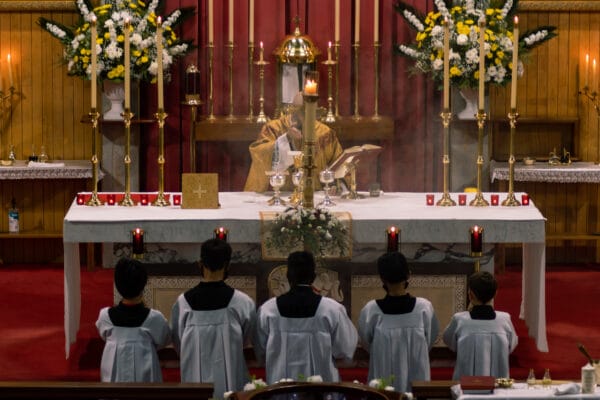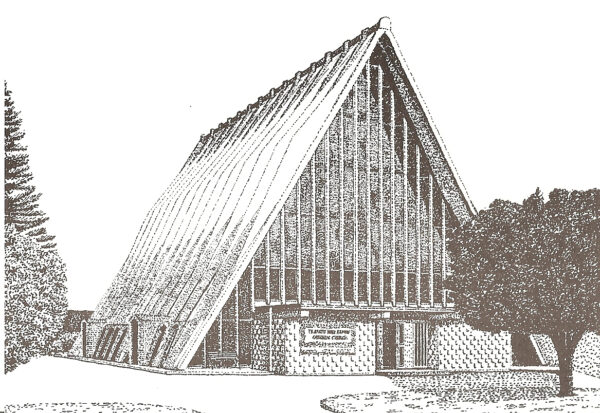Introduction
The Health and Safety at Work Act (2015) came into effect in April 2016. The new law seeks to improve health and safety in New Zealand workplaces to reduce the number of fatalities and injuries suffered every year. It has very wide application and now puts obligations for health and safety on churches and charities. Churches now have a duty of care to ensure no one is harmed while attending church or related church activities or while working for us or on our premises.
A safety management system is an established set of procedures to manage health and safety and maintain a high safety standard in the workplace. The following procedures and guidelines have been developed by the Catholic Diocese to be used at the parish level.
Holy Family parish is committed to providing a safe and healthy work environment with a purpose of protecting employees, volunteers, visitors, contractors, church property and the environment. The parish will do so by taking all reasonably practicable steps to eliminate or minimise any risks/hazards under our control, to prevent harm from occurring.
Thank you to Blockhouse Bay Parish H & S Sub Committee for supplying a lot of the following information.
Health & Safety Responsibilities
Health and Safety responsibilities outlined in this section clearly describe the responsibility that applies to each person in the parish, specifically how the commitment and responsibilities are applied to maintain and improve Worker behaviour and a culture that prevents injuries to people.
Health & Safety Responsibilities
Health & Safety Policies
Parish policies and procedures establish the rules of conduct within the church, outlining the responsibilities of both parish and parishioners. Church policies and procedures are in place to protect the rights of workers, volunteers and officers.
Discomfort Pain Injury (DPI) Prevention Policy
Hazard & Risk Management
Healthy and safe work starts with identifying and understanding what the parish-related health and safety risks are. Risks can be generated from hazards (things, situations, processes, etc.) that may cause harm, particularly to people. After identification is made, risks are analysed and evaluated to understand how likely and severe the risks are. It then involves doing what is reasonable and practicable to eliminate those risks. Where the risks cannot be eliminated, they are minimised so far as is reasonably practicable.
Risks, once identified, assessed and controlled, are communicated to all parishioners and contractors. Priority is given on the parish’s high risks first before managing less serious risks.
For further information please follow the links below.
Risk Management Procedure (Refer Page 8)
Risk Management Presentation 11 June 2019
Hazardous Substance Register Sep 2019
Incident Management
An incident is any occurrence that results in adverse consequences to people, the environment, property/plant, or a combination of these. This includes incidents on Parish premises involving Workers, Volunteers, Contractors, Visitors and the public.
Examples of incidents are vehicle accidents, slip/trip/fall, falling objects, oil spill, fire, sexual harassment, bullying, conflict of interest, physical assault, shooting/stabbing, mental pressure, and suicide, etc.
An incident, once reported, is investigated to identify root causes and then to address these causes in a timely way through the implementation of necessary remedial actions in order to prevent the incident from happening again.
All major incidents are reported to the Health and Safety Co-coordinator at Catholic Diocese of Auckland (CDA) as soon as practically possible.
For further information please follow the links below.
Incident Management Procedure (Refer Page 15)
Notifiable Incidents to WorkSafe
Near Miss and Incident Investigation Report
Injury Management
In the Parish there may be a large number of people (workers, volunteers and visitors or parishioners) gathering at any one time, especially during mass times, so it is important to have First Aiders in case of sickness or injury. Trained First Aiders (refer to Trained First Aiders Register) perform a vital function in providing first-level care until full medical treatment can be administered (if required) by the ambulance staff. In this way, First Aid can help reduce the severity of an injury and even save lives in some instances. First Aiders of course may also provide treatment for smaller injuries such as minor cuts, wounds and burns.
All First Aiders have access to a First Aid Kit which is located inside the Sacristy. The First Aid Kit contents are regularly checked and kept up-to-date. Automated External Defibrillator (AED) is also located just outside the Sacristy mounted on the wall.
Any first aid treatments given are recorded in the First Aid Register. If the accident is serious in nature, an Incident Report is completed in accordance with the Incident Management Procedure discussed above. For serious injuries, medical care are extended to families and work-mates.
Emergency Management
The Parish has prepared plans to manage any emergency (e.g. fire, earthquake, bomb threat, terrorist attacks, volcanic eruption, etc.) promptly and effectively to protect the workers, volunteers, parishioners/visitor, assets and to achieve parish continuity. Most likely emergencies that would occur during normal church activities and use of facilities are Fire or Medical emergencies. These plans are regularly tested and updated to achieve adequacy and effectiveness. Emergency plans, once tested and updated, are communicated to all workers and volunteers working within the Parish.
Emergency evacuation procedures are included in the parish Fire Evacuation Plan document. Parish regularly test the effectiveness of the evacuation process by conducting trial evacuations once in every 6 months. Parish Finance Committee ensures that the emergency equipment are in place, fire safety/exit signage are clearly displayed, evacuation procedure and assembly points are visible.
For further information please follow the links below.
Emergency Management Procedure (Refer Page 12)
Wardens Emergency Evacuation Responsibilities
NZFS Guide to Evacuation Schemes
Evacuation Scheme Application Form
Contractor Management
The Parish engages two types contractors to carry out work on church sites. They are Low Risk Contractors (e.g. performing lawn moving, less extensive painting, fitting light bulbs, and some minor electrical work) and High Risk Contractors (e.g. performing roof constructions, building extensions, and extensive refurbishments).
High Risk Contractors are only allowed to work on church sites upon they have been approved by the Diocese (Diocesan Property Group). Parish will follow the Diocese Health & Safety Guidelines for managing physical works Contractors on site.
Contractor Management Procedure (Refer Page 22)
Guidelines to Contractor Management
Contractor Induction (Low Risk)
Contractor Induction (High Risk)
Contractor Monitoring Checklist
Events Management
Events and the parish go hand-in-hand because church families enjoy spending time together and often seek out ways to gather as a group. Some examples of the parish events are: Morning tea after mass, Church anniversary celebration, Christmas carols, Sacramental programmes and Fundraising events.
Prior to an event, the event organisers will prepare a event operation plan to deliver a healthy and safe event environment. Event operation planning includes identification of any hazards (e.g. poorly lit walkways or steps, potholes in pathways or other physical hazards such as electrical leads across pedestrian areas) & their controls, parking, traffic management, amenities for the number of attendees, crowd management, facilities for people with disabilities, food safety, noise management, waste management, first aid provision and emergency management.
Health Safety Officer will ensure that the event organisers/volunteers are skilled, qualified (if necessary) and capable of carrying out the tasks they have been assigned.
For further information please follow the links below.
Event Health & Safety Guidelines
Plant & Property Management
The parish ensures timely management and administration of all plant and property including:
- Regular maintenance of all property to prevent unexpected damage and deterioration and expensive repairs
- Buildings to be kept free of asbestos and other toxic materials
- Provision of adequate insurance cover on all property
- If a building requires an annual Building Warrant of Fitness, a qualified certifier is engaged to renew the BOF in accordance with the local Council requirements. For example, the Parish Hall/Office building is equipped with a fire alarm system, hence a BWOF certificate has been issued by an Independent Qualified Person (IQP).
- Church buildings meeting the minimum earthquake rating of 34% of New Building Standard (NBS) as required under the Building Act.
Form 12 Building Warranty of Fitness
Management and Removal of Asbestos
Site Management
Parish ensures that the Church Building site is maintained in such a way that they do not pose any risk to people and the environment.
Toxic material like oil and paint can be spilled or washed into waterways from cleaning. Parish will take all practicable actions to prevent any harmful materials entering into our streams, waterways and the sea via the church storm water system.
Parish will also manage waste (litter and waste reduction) efficiently including recycling of cardboard and plastic materials.
The Parish will develop a Traffic Management Plan to ensure any vehicle movement to and from the building site do not pose any harm to the foot traffic.
Site Safety Checklist (Office)
Site Safety Checklist (Church)
Worker & Volunteer Participation
The Parish will ensure Parish Workers/Volunteers have the opportunity to be proactively involved in the implementation, development, monitoring, review and planning of health and safety policies, systems and practices to ensure a mentally and physically safe and healthy workplace; and to promote a positive health and safety culture.
Work & Volunteer Participation Procedure (Refer Page 25)
Health and Safety of Volunteers at Work
Health & Safety Agenda and Minutes (Template)
Minutes from Risk Workshop 13 August 2019
Annual Reporting to the Diocese


